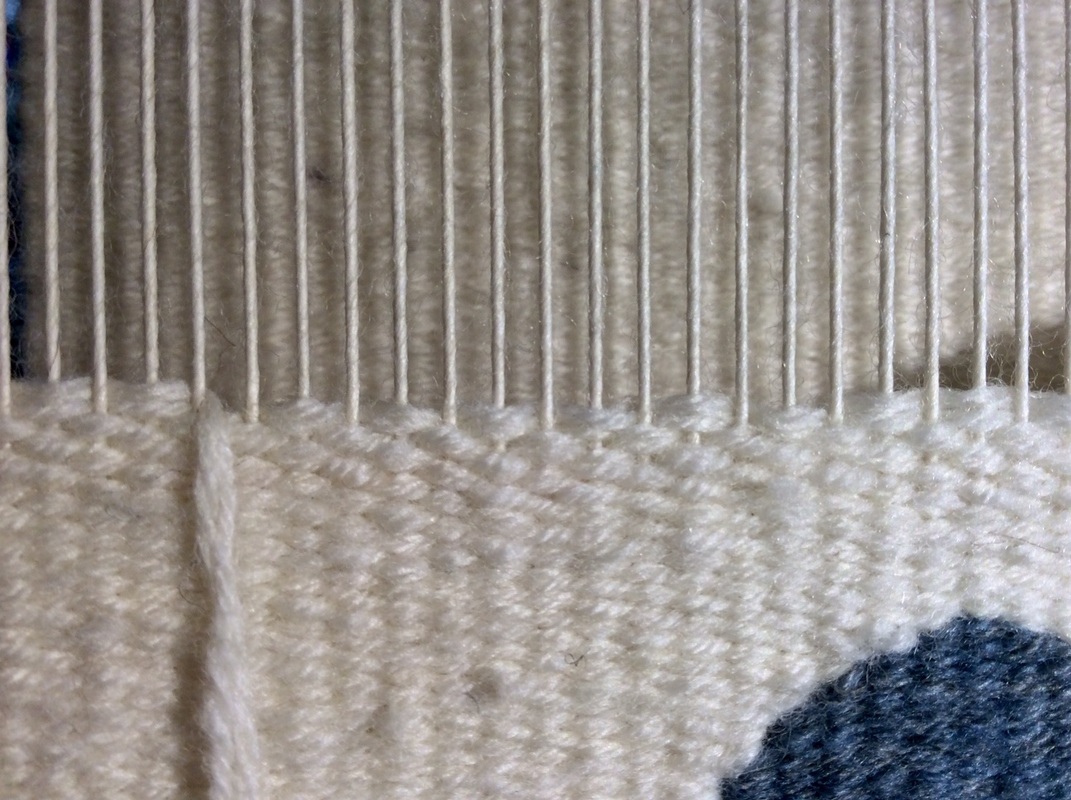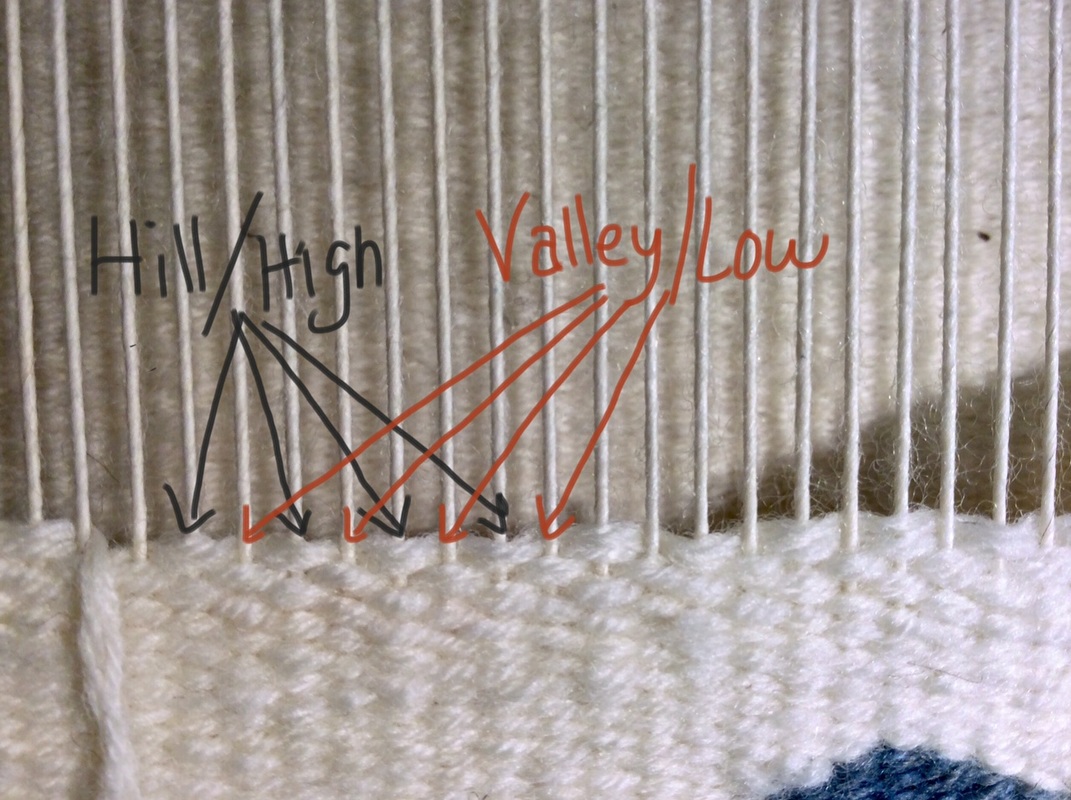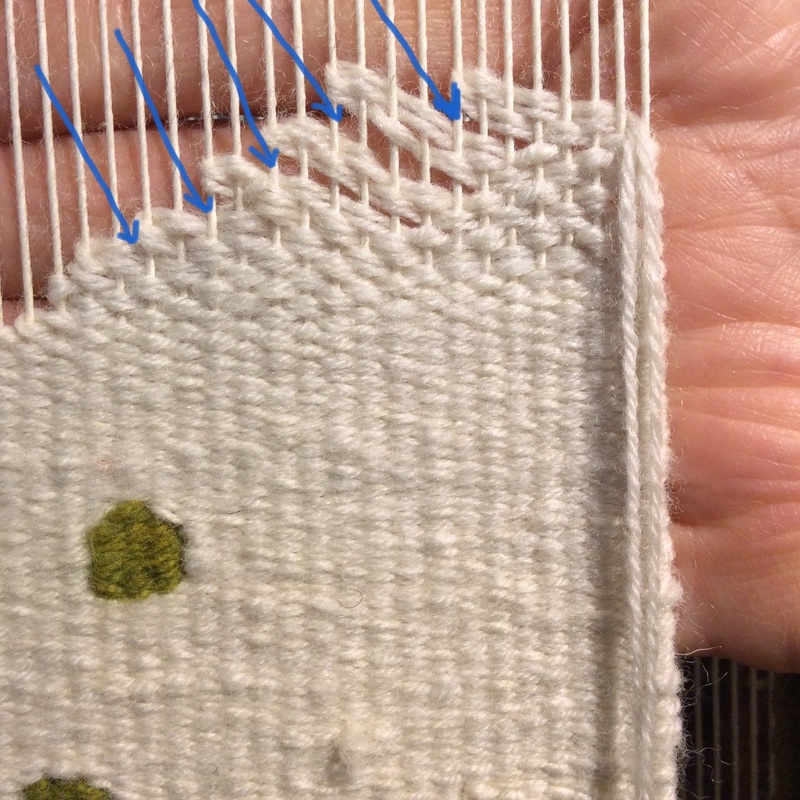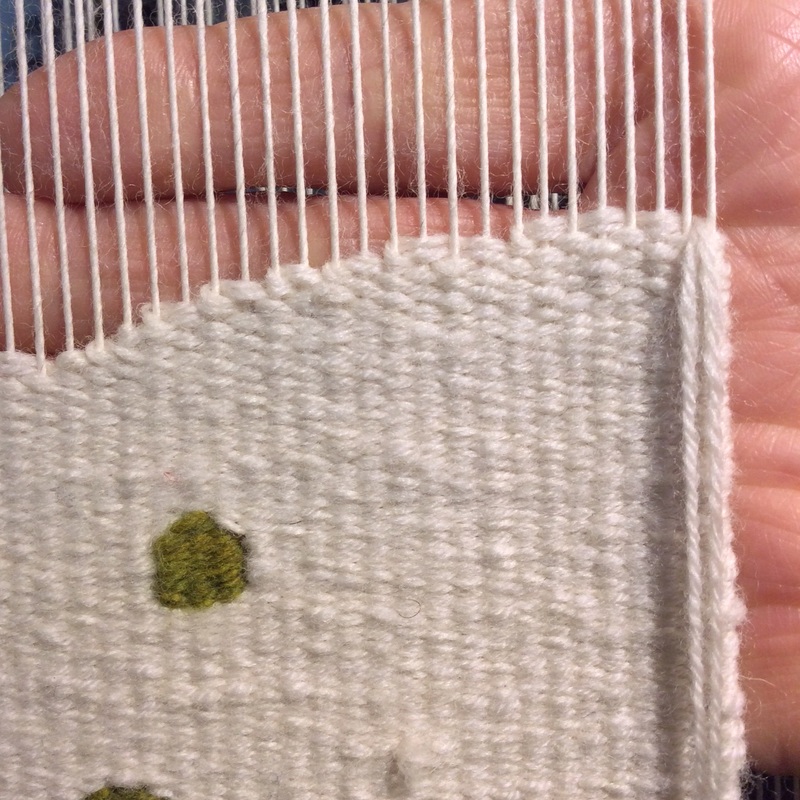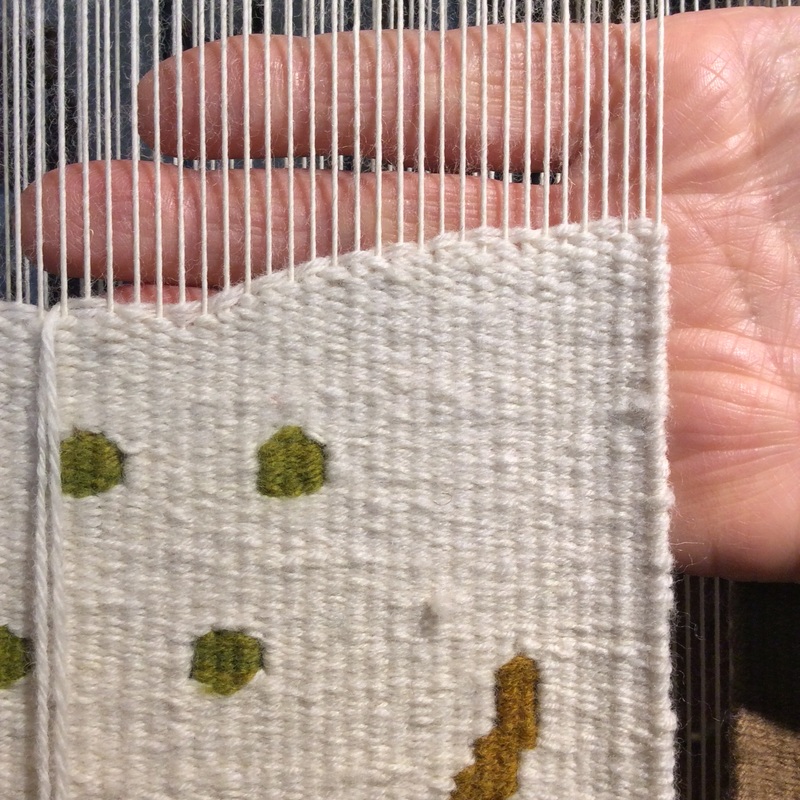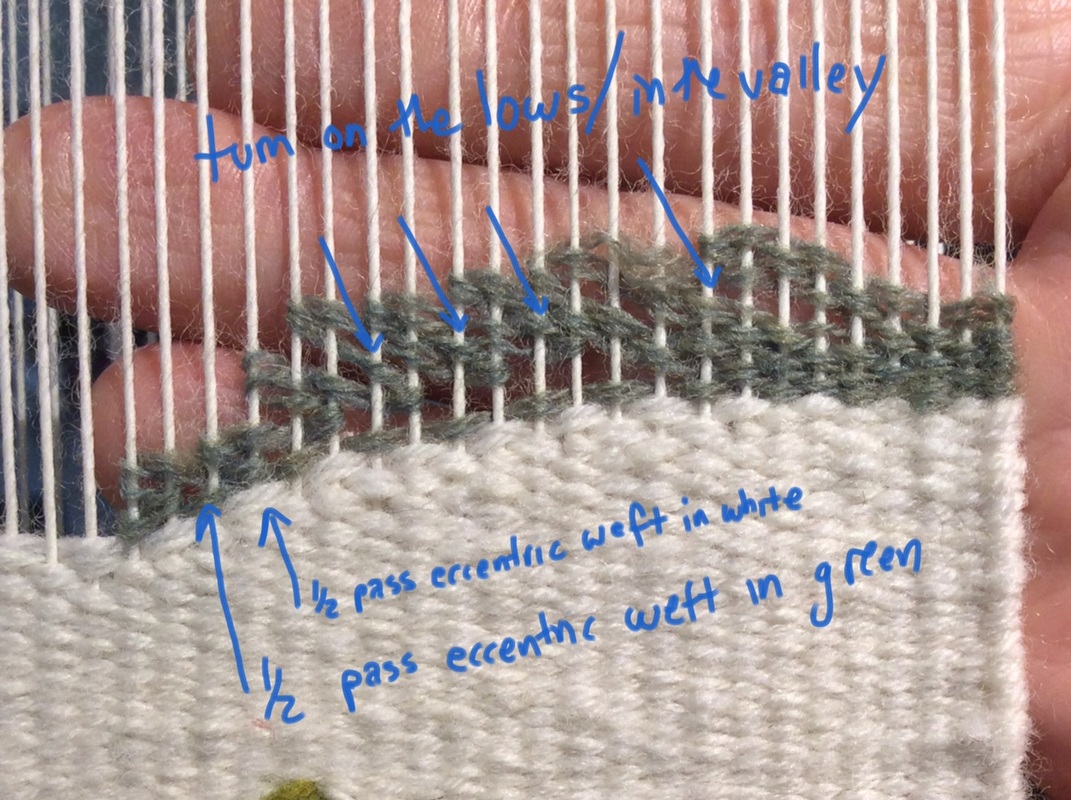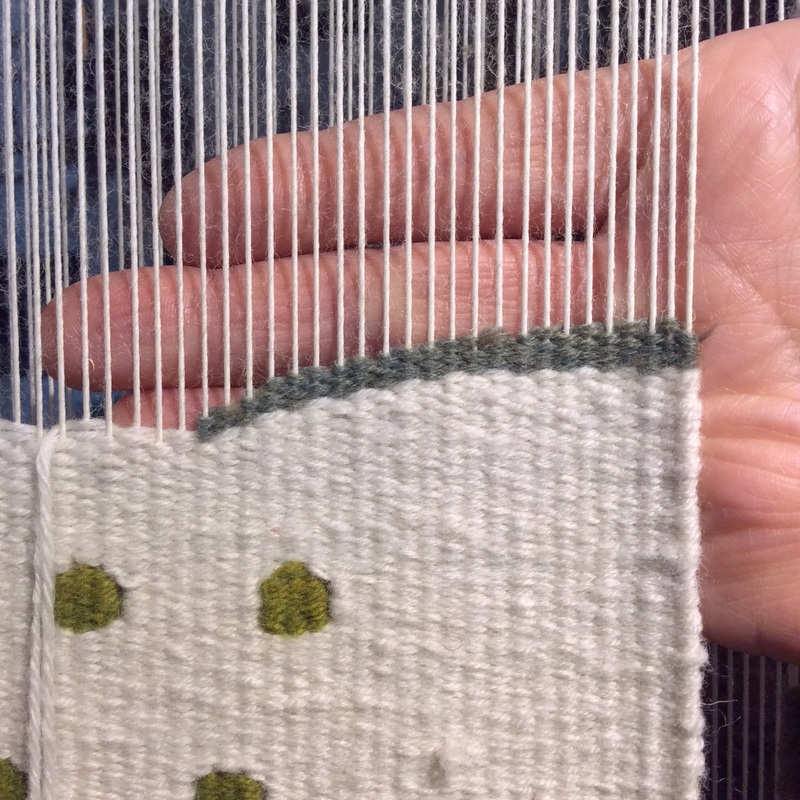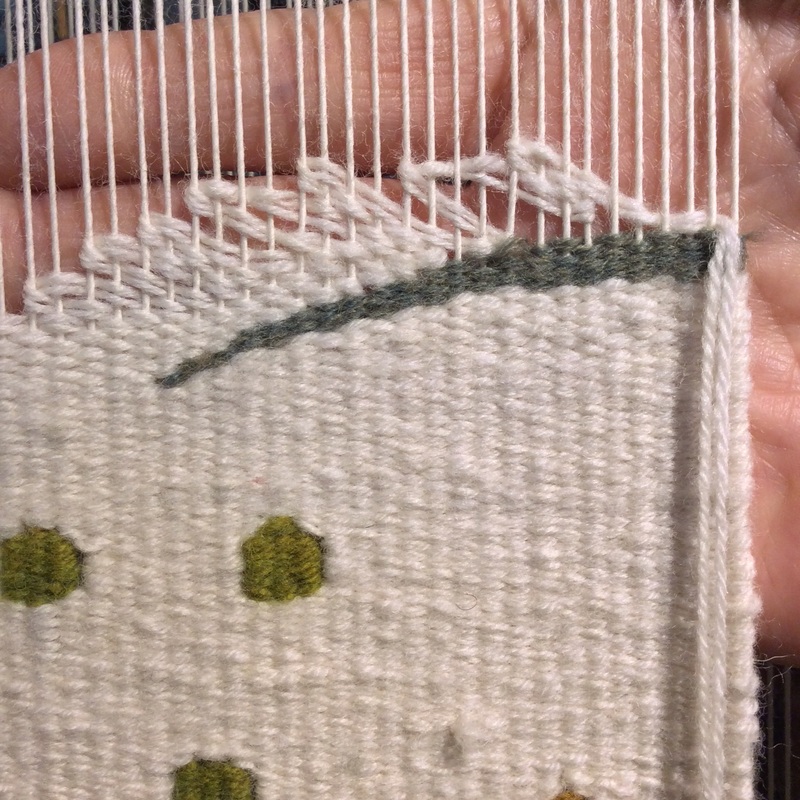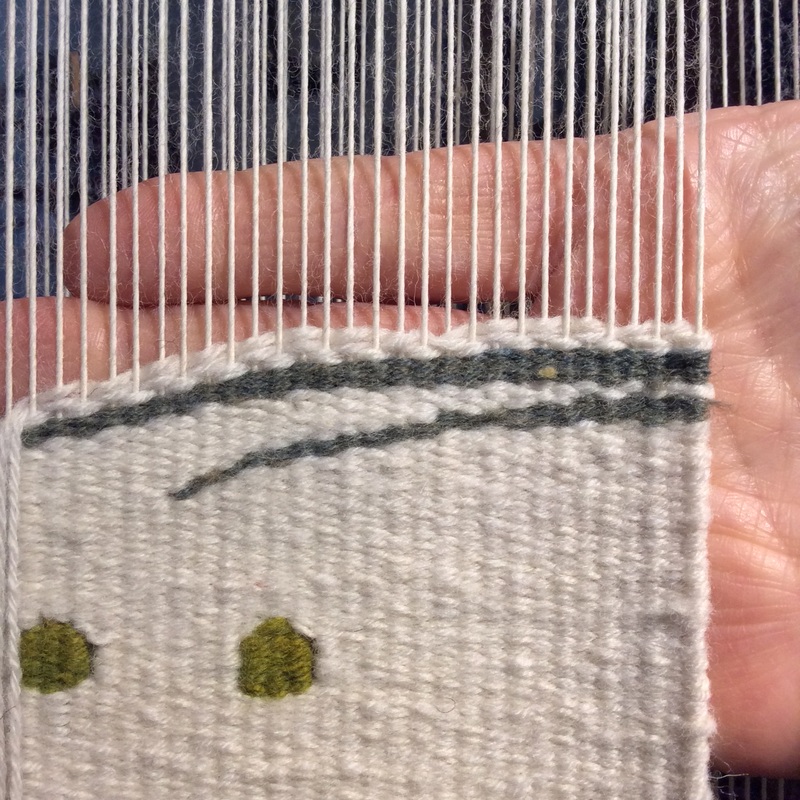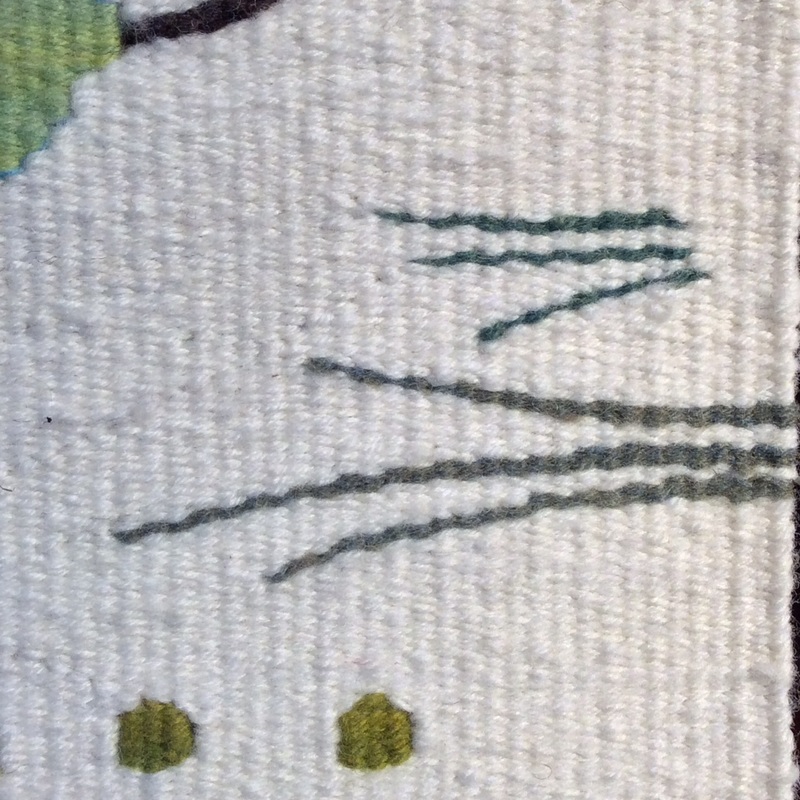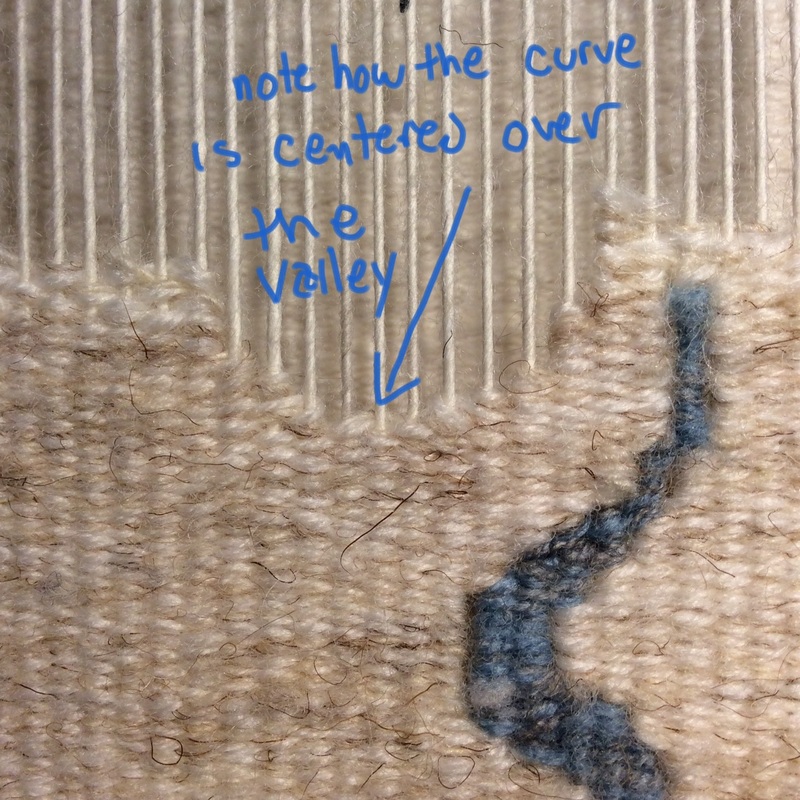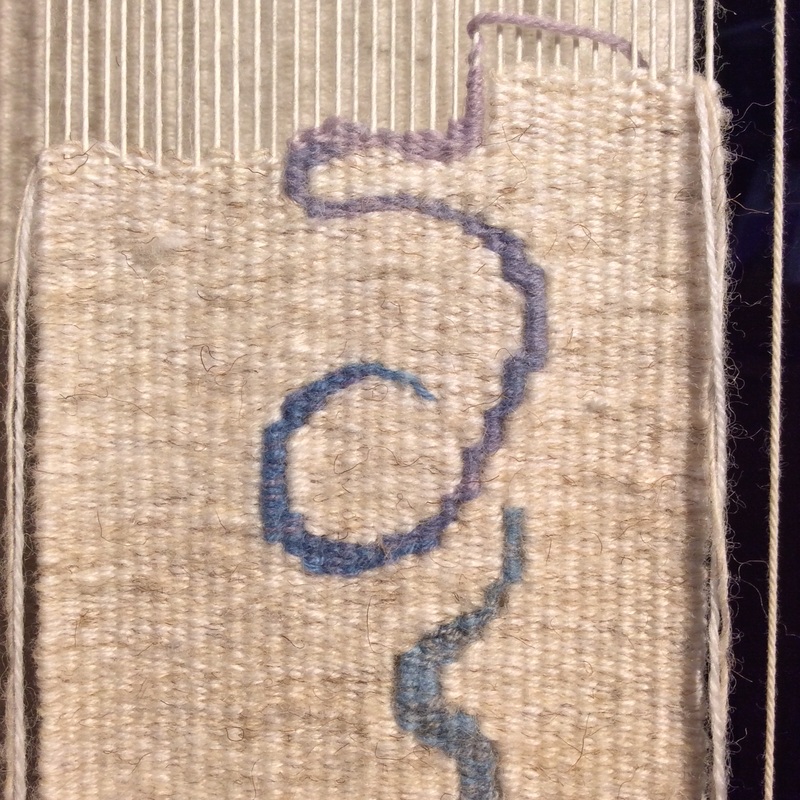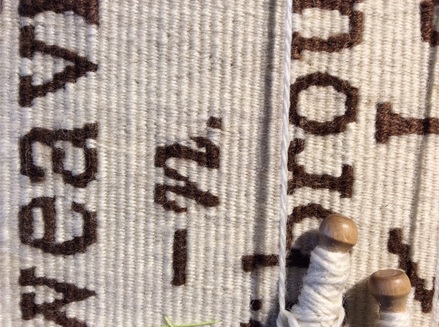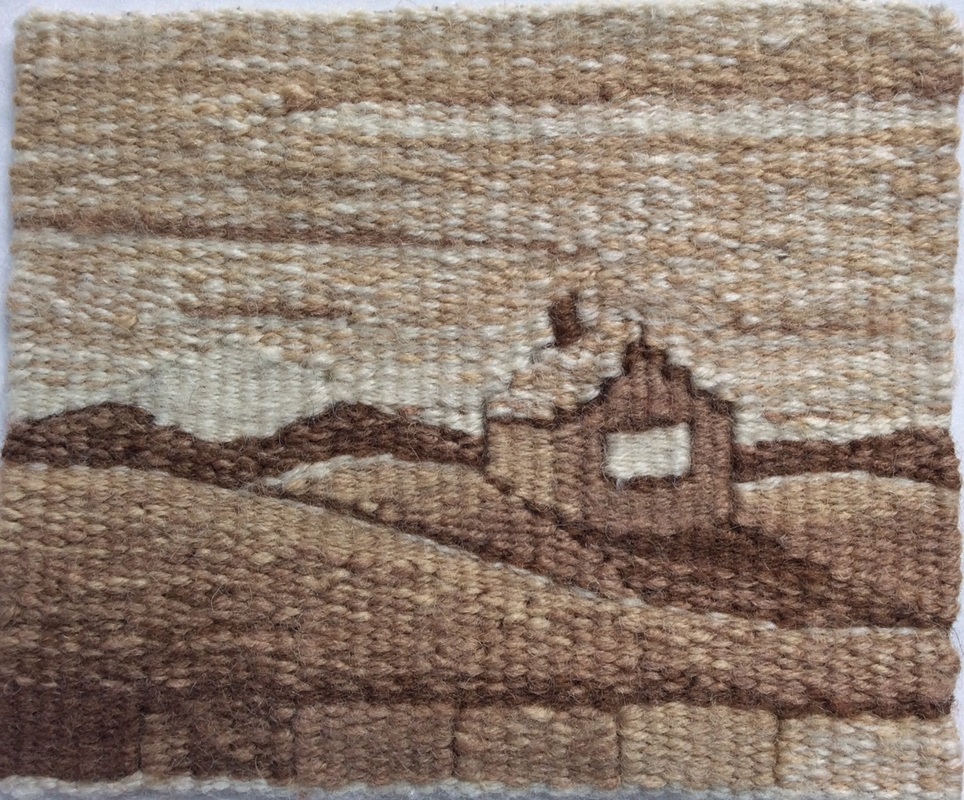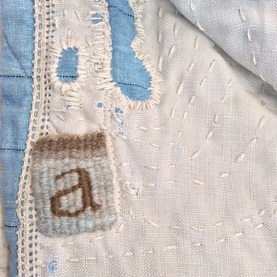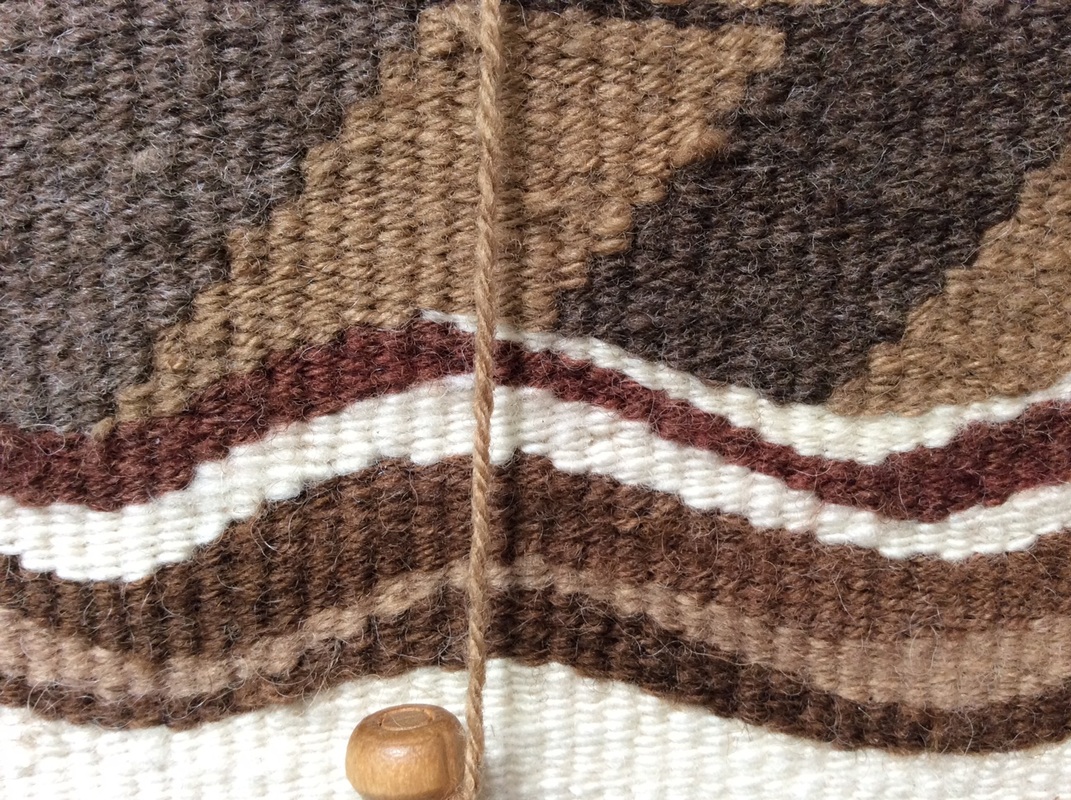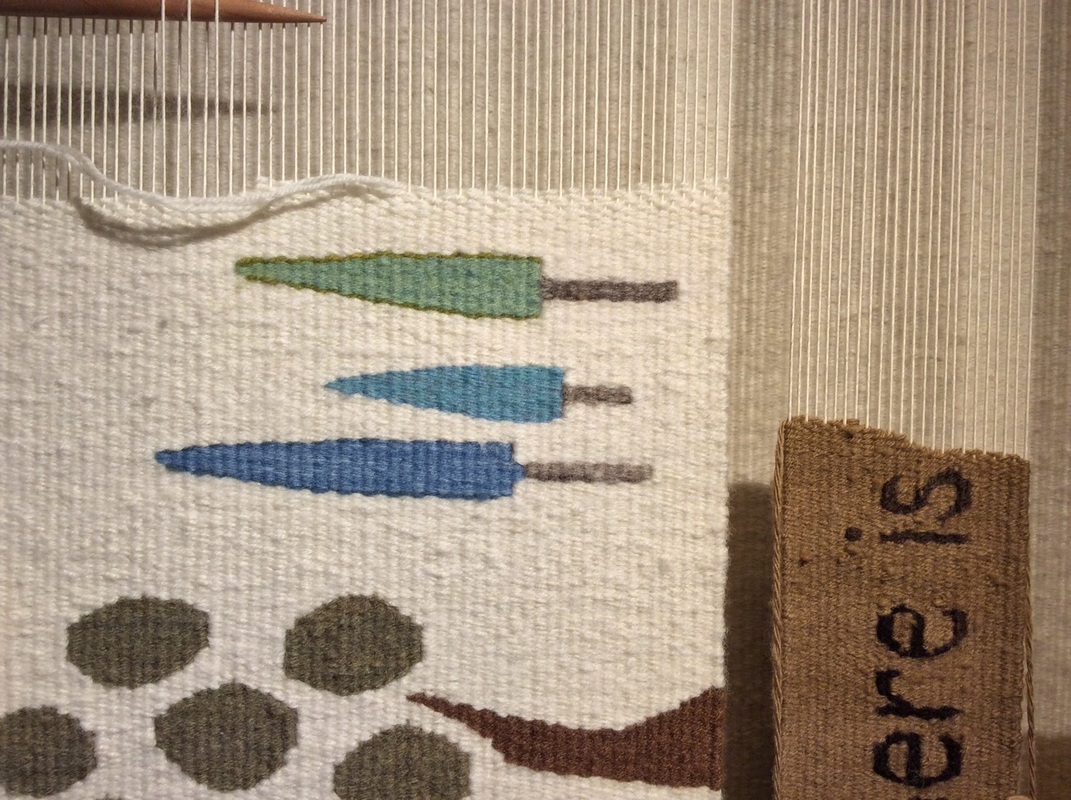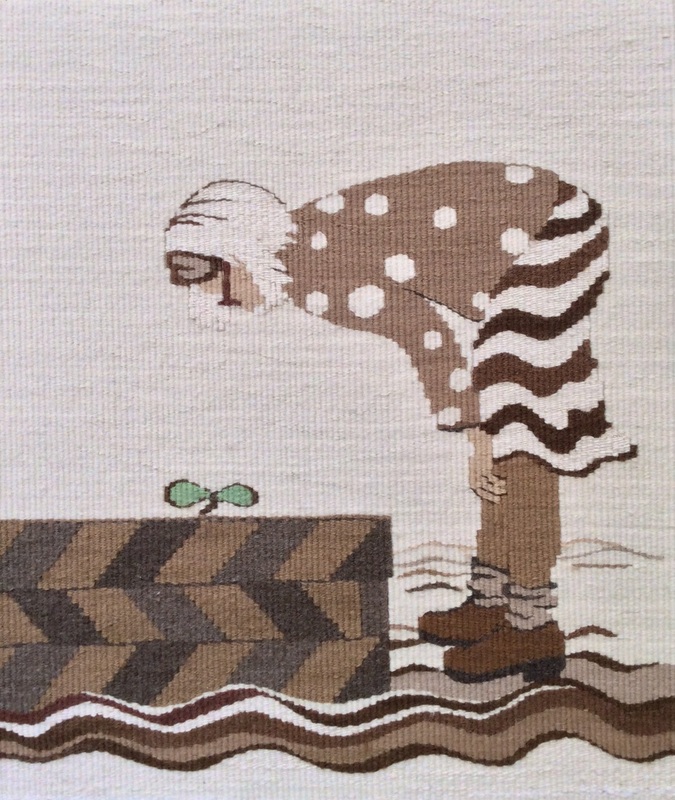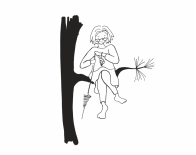Hill and Valley
Full and Hollow
All names for the same thing:
that every half pass of weft is like a wave,
seeming to rise up and sink down as it crosses the fell
going over and under alternate warp ends.
Over = high/hill/full
Under = low/valley/hollow.
"The hills and valleys will switch position with the next half pass!"
That is true.
But when building curves on our beloved grid, taking advantage of (or ignoring), the hills and valleys can drastically effect the appearance and structure of shapes
Then, to gradually flatten out the curve, I turned on alternate, then every fourth warp, making sure to turn over a valley/ low spot, rather than a hill.
The turns snuggle down into the valleys, smoothing out the steps between passes.
For Knitters, think short rows.
Below you can see this packed down.
I made one half pass of eccentric weft,
but those things, whatever they are, will have to wait for another day.
Today is Hill and Valley Day.
I love them so much that they get a blog post of their own.
If you weave from the back
a hill on 'your' side of the loom
will be a valley on the other.
Since I weave from the front, my curves are smoothest on the side facing me, more stair-stepped on the back. which is why, though my tapestries appear to be two sided, they are not.
Not that I don't pretend that they are.
It's just a thing that is true.
